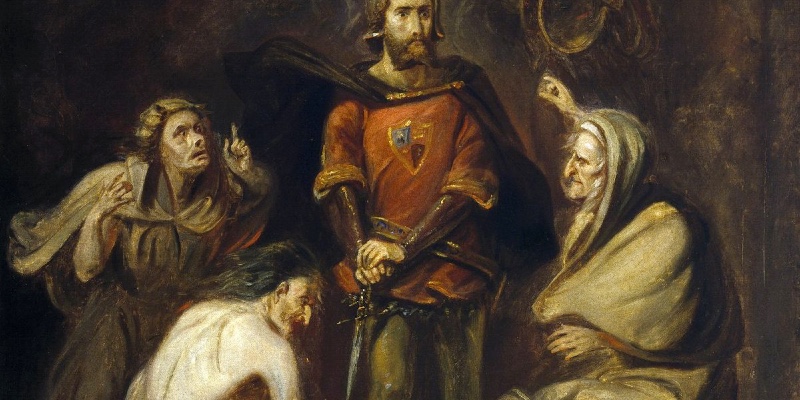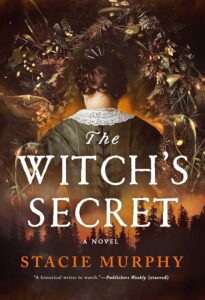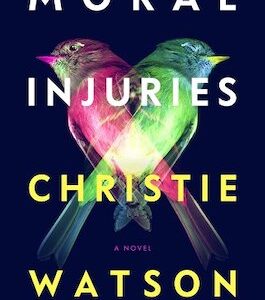For those of us who love witch-related history and lore, the last few years have been the literary version of an all-you-can-eat buffet. Dozens of novels have explored witches and witchcraft, and there’s something to appeal to every taste. Whether you like your witches unjustly accused or full to the brim with magic, whether you want them to dispense wise counsel and herbal remedies or bring wrack and ruin to their enemies, whether you prefer to read about kindly old ladies with gnarled hands or vengeful, raven-haired goddesses, there’s a witch book out there for you.
I’m excited to be adding my own contribution. My third novel, The Witch’s Secret, is set during the American Civil War and tells the story of Joya Shaw, a young witch who, after misusing her power for personal ends, is stripped of her magic and banished to the Colorado Territory, where she begins to suspect that someone is summoning demons to aid the rebels. Like my previous books, The Witch’s Secret is a mix of magic, mystery, and history, with a dash of romance.
Below, I’ve listed six of the works that have contributed to my love of all things witchy over the years. They all approach witchcraft and magic in different ways, and they’re all an absolute delight.
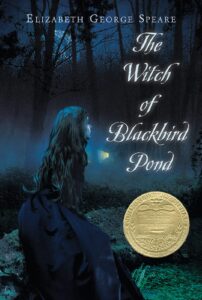
The Witch of Blackbird Pond, Elizabeth George Speare
I’ve loved this book since I was a child. It’s 1687, Kit Tyler’s beloved grandfather has died, and she’s been forced to leave their home in Barbados to live with her Puritan relatives in the Connecticut Colony. Poor Kit is an outsider from the start. She can read. She can swim. She wears silk dresses and speaks out of turn and befriends Hannah Tupper, the widowed Quaker woman who lives on the outskirts of town. When illness strikes, it doesn’t take much for superstitious fingers to start pointing, first at Hannah, who escapes, and then at Kit. Accused of trafficking with the Devil, Kit goes on trial for her life.
The Witch of Blackbird Pond is dramatic, atmospheric, and romantic, but there’s not a scrap of actual witchcraft in it. Does that matter? Nope. I adore it just as much now as I did when I first read it in the fifth grade.
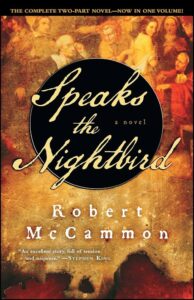
Speaks the Nightbird, Robert McCammon
The first entry in McCammon’s Matthew Corbett series finds the future “problem solver” deep in the wilderness of the Carolina Province, where a woman has been accused of witchcraft. As clerk to the magistrate assigned to handle the case, Matthew is involved in questioning witnesses, as well as the woman herself, Rachel Howarth. Even as his master becomes more convinced of Rachel’s guilt, Matthew finds himself developing feelings for her and growing ever more desperate to exonerate her.
Although there’s a suggestion of the supernatural in the book, the solution to the mystery reveals itself to be firmly in the realm of the mundane. Regardless, it’s an edge-of-your-seat adventure with compelling characters and an oppressive, early Southern-Gothic setting.
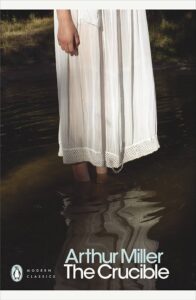
The Crucible, Arthur Miller
It’s not a novel, and in full disclosure, I may be biased because I played Rebecca Nurse (badly) in my high school drama club’s production in the mid-nineties, but I love The Crucible. It’s a tense, moving, terrifying dramatization of the 1692 Salem witch trials, the foundational event in American witch lore that led to the deaths of at least two dozen people (19 were hanged as witches, one was “pressed to death” beneath heavy stones for refusing to enter a plea, and at least five more died in jail).
Miller wrote the play as an allegory for the Red Scare of the 1950s, when hysteria had some Americans imagining communists hiding behind every rock. Like all good allegory, however, The Crucible works on multiple levels. You can enjoy it for its own sake even if you don’t know a thing about Joe McCarthy and his lack of decency.
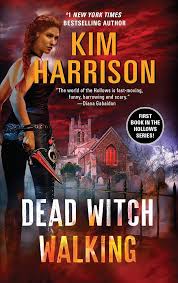
Dead Witch Walking, Kim Harrison
The only history in this first installment in Harrison’s 20-book (and counting!) Hollows series is of the alternate kind. A genetically modified virus has decimated the human population and allowed supernatural beings of all stripes to announce their presence to those left behind. Witch and bounty hunter Rachel Morgan brews potions and invokes charms to help her nab leprechauns, rogue banshees, and even the occasional dark sorcerer-turned-love-interest. With sarcastic pixy Jenks and sultry living vampire Ivy at her side, Rachel confronts—and overcomes—a wide range of threats, even as she’s forced to reckon with her own history and ever-growing power.
Full of wisecracks, mysteries, and romantic angst, the Hollows series is an inventive and fully realized take on a modern urban fantasy.
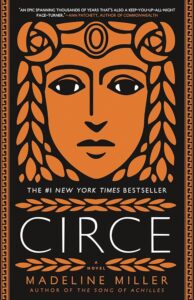
Circe, Madeline Miller
I was all but speechless after reading this gorgeous, twisty re-imagining of Greek myth. The daughter of Helios, the sun god, and an ocean nymph, sorceress Circe is most well-known for an episode in Homer’s Odyssey in which she transforms drunken sailors into swine and sends brave adventurer Odysseus on a quest through the Underworld. In Miller’s novel, however, we hear Circe’s whole story in her own words, full of not only well-earned rage, but also passion and longing.
The magic isn’t precisely the point of the novel, but Circe’s embrace of her essential nature—and the power she can wield to shape her own destiny—is viscerally satisfying, and Miller’s prose is perfection.
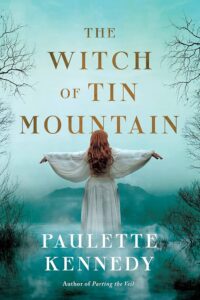
The Witch of Tin Mountain, Paulette Kennedy
One of the newest entries on my list of “books I’m jealous I didn’t write,” The Witch of Tin Mountain is a multi-timeline novel chronicling three generations of women living in the Ozark mountains. Gracelynn lives with her adopted grandmother, dispensing charms and tinctures to townspeople who regard the women with suspicion even as they accept their aid. When a faith healer comes to town, stoking fears of the devil and offering blessings to those who follow him, Gracelynn is forced to fight for her family, her home, and her own soul.
Kennedy excels at infusing a creeping sense of dread into her work, and The Witch of Tin Mountain builds from the very first page toward a terrifying and ultimately triumphant resolution.
***

